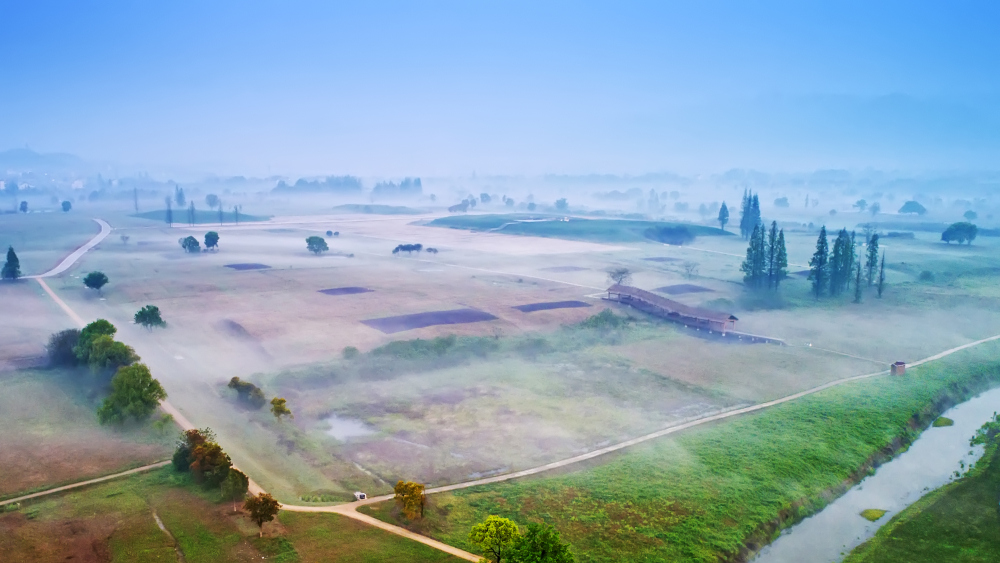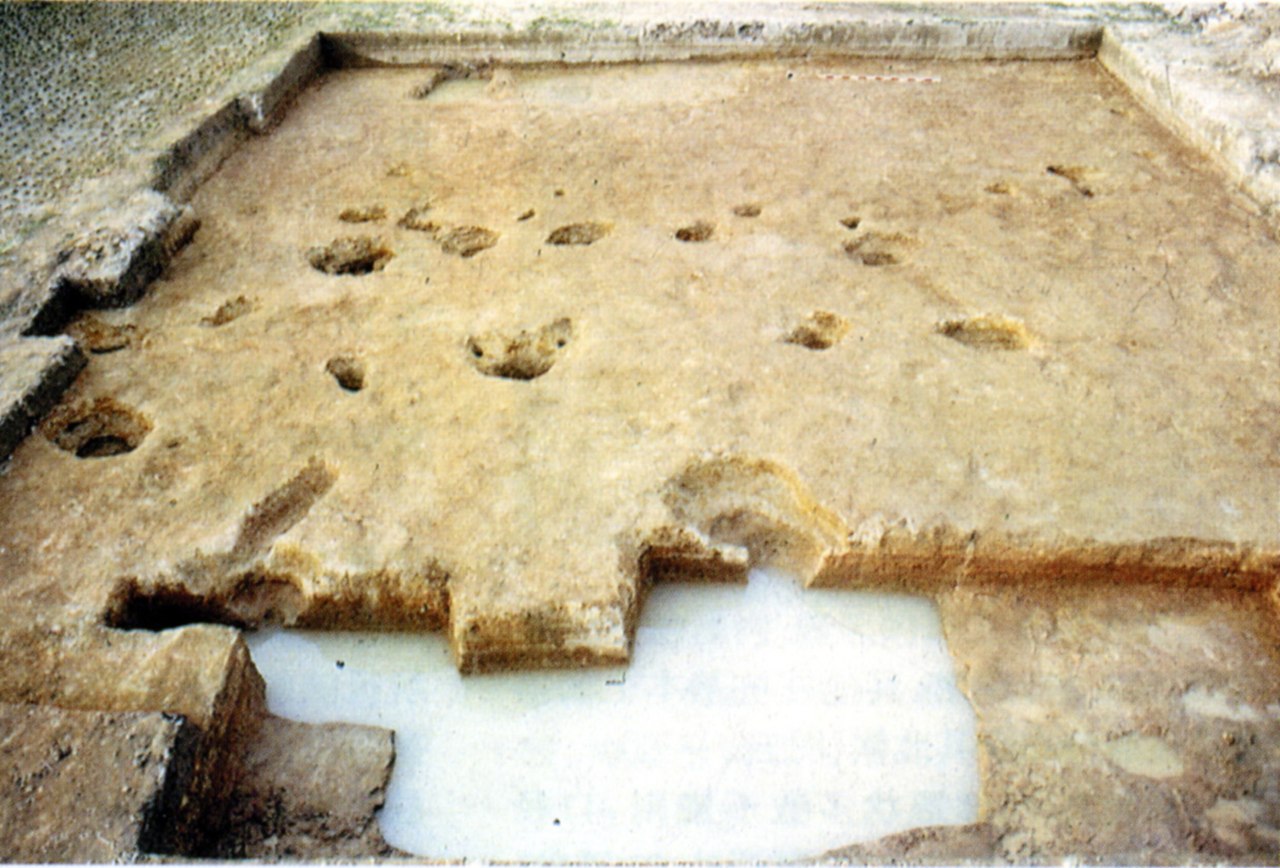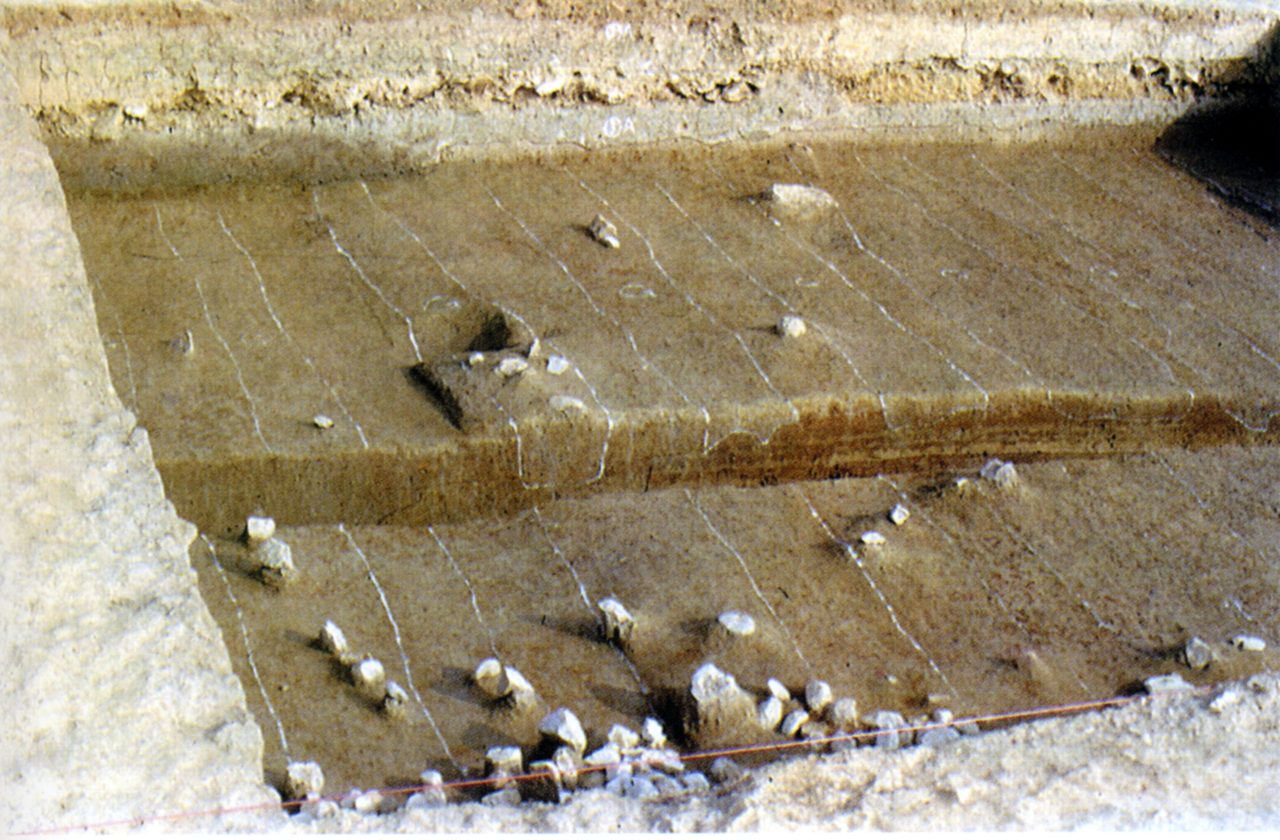
As the core of Liangzhu ancient city, the city site lies in the area with a dense river network between Dazhe Mountain and Daxiong Mountain, enclosed by the stretching branch of Tianmu Mountain in the north, west and south sides.
Ancient rivers such as Changminggang and Zhongjiagang run through the ruins to make the site surrounded by mountains and girdled by water, dividing the city into different functional zones. The city site consists of three parts in a centripetal layout, i.e., the palace area (39 hectares), the inner city (about 280 hectares including the palace area) and the outer city (about 351 hectares).

The palace area lies in the middle of the city site, where there are three independent palace terraces (Mojiaoshan terrace, Huangfenshan terrace and Chizhongsi terrace), a sandy soil square, a large granary and 35 housing foundation sites, the main venue for supreme rulers to carry out activities during the Liangzhu period.

In 2010, archaeologists discovered a pit of abandoned carbonized rice formed by a granary fire at the eastern slope of Mojiaoshan, with carbonized rice weighing about 13,000 kg. Recently, another heap of abandoned carbonized rice of more than 5,000 ㎡ was discovered at the Chizhongsi terrace, whose total amount of carbonized rice is ten times as much as that of the aforesaid pit according to a preliminary estimation.
The plane of the inner city is somewhat a rounded rectangle, enclosed by the city walls at four sides, with a length of about 1,910 meters from south to north and a width of about 1,770 meters from east to west, a total area of about 300 hectares, a perimeter of about 6,000 meters, eight water gates and one land gate.
The outer city is a semi-closed structure composed of seventeen scattered terraces. The structural height of terraces within the city site is declining from inside to outside, showing a descending hierarchy. Apparently, Liangzhu ancestors developed a unified layout and an elaborate planning for both inner and outer cities, inside and outside the city site. Around the city site are contemporaneous ruins, which forms a spatial division of urban and suburban areas with the city site.

(Executive Editor: Liu LIU)